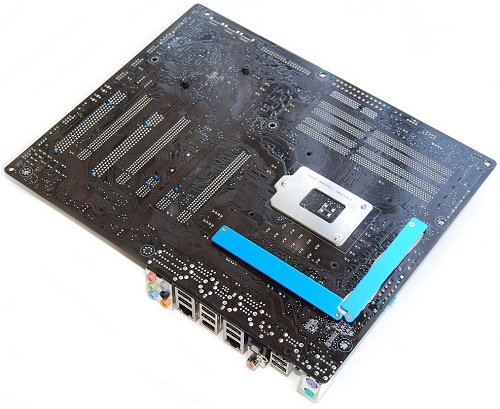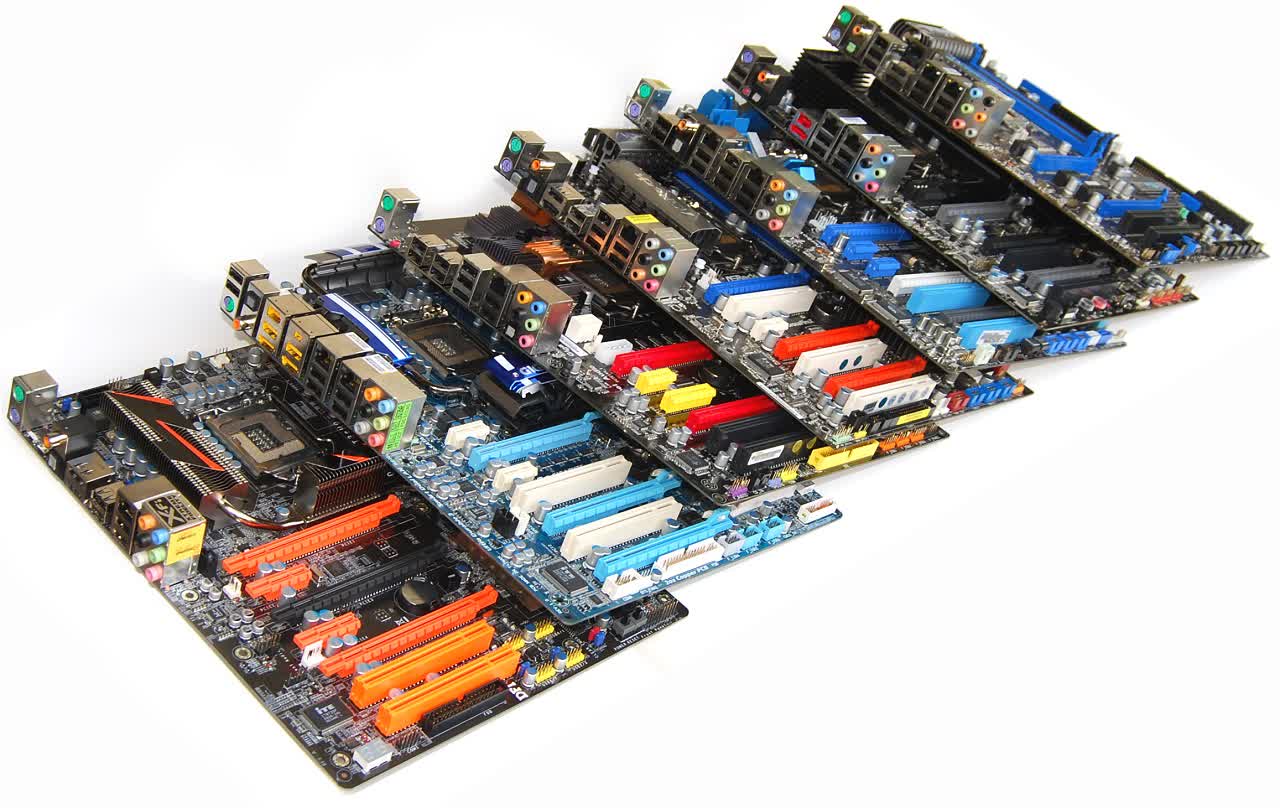Asus P7P55D Deluxe – Design
The Asus P7P55D Deluxe is an impressive looking motherboard and if we are honest based on looks alone, taking nothing else into account, one would infer it costs significantly more than the Asrock P55 Extreme. Still, when it comes down to it, the board designs are actually very similar with very few major differences.

Again, because the Intel P55 chipset has a TDP (Thermal Design Power) of just 4.7 watts, the heatsink cooling it does not need to be very large at all and can get away without any kind of active cooling. Although its surface area is quite large, measuring 7 by 8 cm, it is just 0.5cm tall. Asus could have gotten away with making the heatsink twice as thick, but then again, there really is no need to.
The surface area of the heatsink is covered in a thin plastic sheet which carries an eye catching design. This serves no other purpose than to act as eye candy and it will certainly limit the air-flow over the heatsink.

The Asus P7P55D Deluxe features much larger heatsinks on the board's power circuitry. Although not quite as big as on Asrock's board, the heatsinks found on the P7P55D Deluxe measure 9cm long, 1.5cm wide and 3cm tall. These things have a sleek style to them and are connected via a single heatpipe.
Whereas the Asrock P55 Extreme features an 8 phase power design, Asus has implemented a novel 16+3 phase VRM design, which uses 16-phase for vCore and an additional 3-phase for the on-die memory controller. They say this provides the highest level of power efficiency and in turn generates less heat to effectively enhance overclocking capabilities.
Using high quality power components such as low RDS (on) MOSFETs, Ferrite core chokes with lower hysteresis loss, and 100% Japanese-made high quality conductive polymer capacitors, the Asus 16+3 phase VRM design is said to ensure longer component life and minimum power loss. Furthermore, Asus has included another microchip called "T.Probe" which detects and balances power phase loads and temperatures in real-time.
Unfortunately we are unable to accurately measure the effects of their 16+3 phase VRM or T.Probe features, so it is hard to say if they are important additions or just marketing fluff. That said, if the P7P55D Deluxe overclocks like a champion, we will happily believe that these features had something to do with it.

Asus also came up with a simple solution that solved a problem that has plagued motherboards for years: DIMM slots placed too close to the primary PCI Express slot making it impossible to install memory modules without first removing the graphics card. This can be a pain staking process for those using larger graphics cards in smaller cases, as they can be quite awkward to remove.

They removed the DIMM slot clips from the bottom of the slots, keeping them only at the top where they are easily accessible. This means that the user needs only to use the top clips to remove and install memory modules, eliminating the annoying DIMM/PCIe conflict.

Another annoying conflict found on many motherboards arises when using long graphics cards and trying to access SATA ports. By mounting the SATA ports at a 90-degree angle it is possible to use all six SATA ports, even if two high-end graphics cards are installed.

The I/O panel features a pair of legacy PS/2 ports, a CMOS reset button, 8 USB 2.0 ports, Firewire port, two LAN ports, optical and S/PDIF ports along with six audio jacks. When compared to the Asrock P55 Extreme you get an extra USB 2.0 port and another LAN port, while eSATA is missing.

Overall we are impressed with the design and layout of the Asus P7P55D Deluxe motherboard as there are no serious design flaws. The board's cooling is sufficient and the layout caters well for multi-GPU setups, while the I/O panel provides all the necessary connectivity.
